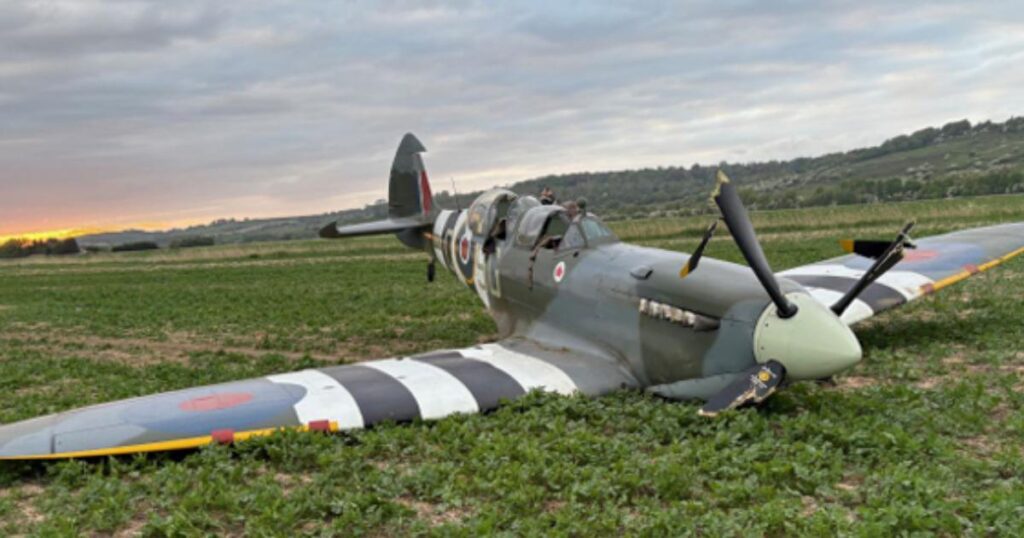The incident occurred on May 3, 2025, and involved the Spitfire IXT with the registration G-BMSB.
The Air Accidents Investigation Branch (AAIB), which published a report on the incident on October 9, 2025, said the aircraft had been in the air for about 35 minutes when the pilot detected slight engine vibrations followed by a sudden power loss.
The pilot also noted a distinct smell of fuel in the cockpit, which led to suspicions of a fuel-related problem.
He then briefed his passenger and initiated a stable glide descent to execute a wheels-up forced landing in an open field near Hythe.
The aircraft landed on its underside, with the passenger sustaining minor injuries, while the pilot escaped unharmed.
The damage to the aircraft included harm to the propeller, lower front engine cowling, right radiator, and the skin of the right wing.
The investigation revealed that the power loss was attributed to the failure of a gasket, likely due to aging, situated within the pressure switch for the fuel low-pressure warning light connected to the carburettor.
This failure allowed pressurised fuel to spray into the lower rear section of the engine bay and into the air filter box.
The fuel was subsequently drawn into the airflow, impairing the fuel-air mixture, causing the engine to operate excessively rich, thereby leading to the vibrations and power loss.
Further examination uncovered a substantial fuel leak within the engine bay, and the gasket fitted to the carburettor fuel low-pressure switch assembly cover plate was found to have deteriorated, likely from age.
The Civil Aviation Authority (CAA) issued a safety notice in response to the incident, relating to airworthiness considerations for aging fuel and hydraulic system components.
The pilot, who had accumulated 7,368 flying hours, of which 60 were on the Spitfire type, shared his thought process and actions during the incident, highlighting several safety aspects.
He explained how he made several decisions to preserve energy, such as not lowering the landing gear or jettisoning the canopy to prevent additional drag, which would have adversely affected the stable glide speed and rate of descent.
The pilot, who is also a flying instructor/class rating instructor, reflected on the forced landing and identified contributing factors to the successful outcome.
He emphasised the importance of maintaining sufficient altitude during a cruise to allow more decision-making time in the event of an emergency and steering clear of built-up areas when flying a single-engine aircraft.
He underscored the value of regular practice for forced landings and attributed his effective handling of the event to his routine practice and the operator’s policy of holding regular ‘What if?’ discussions, which had previously covered power loss and forced landings.
The report acknowledged the pilot’s successful forced landing due to his training and practice, which enabled him to identify an appropriate landing site within the aircraft’s gliding range and effectively manage the aircraft’s energy.
The CAA’s safety notice SN-2025-009 serves to caution historic aircraft operators and maintenance organisations about the necessity of monitoring and maintaining the airworthiness of aging tertiary fuel and hydraulic system switches and similar components.




